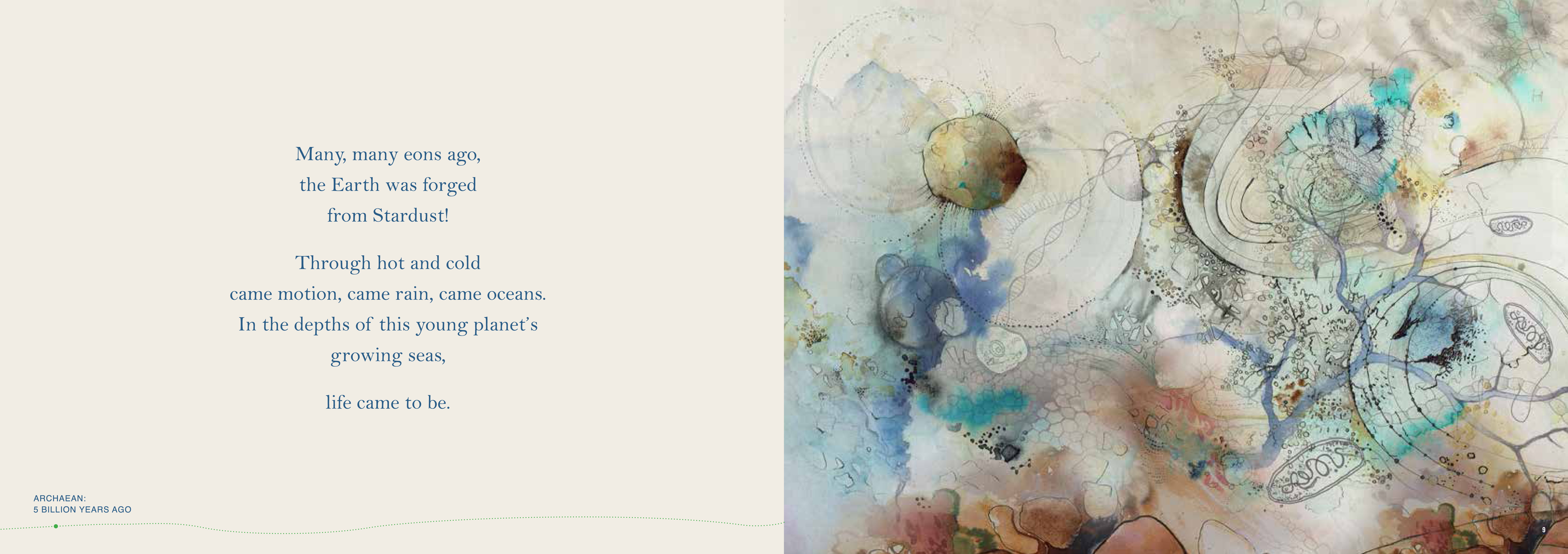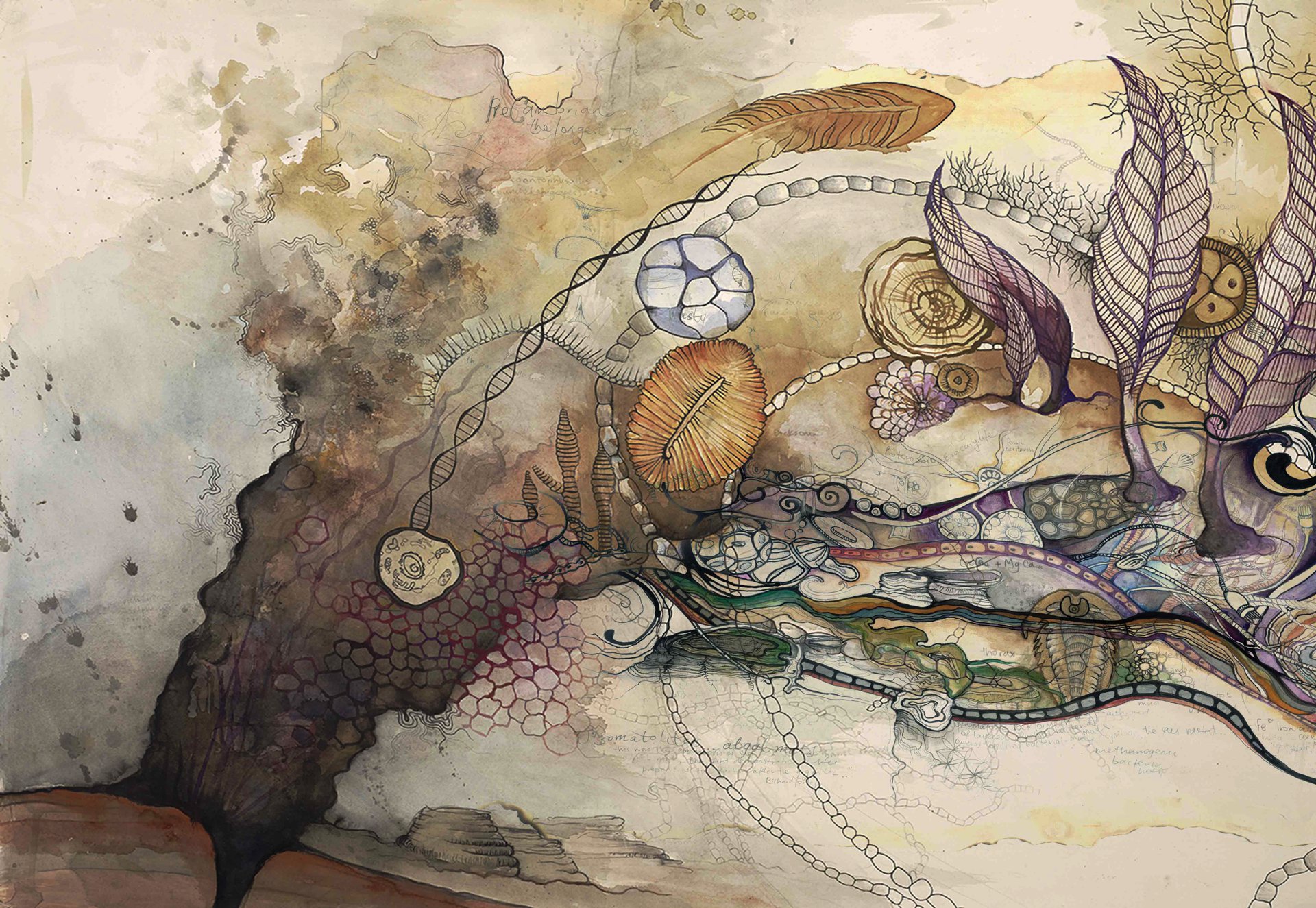In telling stories of evolution, we recognise our complicity, our connectedness, our unity with everything as a writhing, chemical concoction. Evolution is a driving force, a process that weaves chemical cocktails into material entities and simultaneously unravels certainties into potential futures made up of our ancestral legacies.
It helps us recognise that the very first living life form is still alive in each and every thing that is metabolising, from bacterium to human. Through a process of reflection and re-situating, an embrace of messy complexity becomes a beautiful emergence of possibility. Evolution is a unifying concept that reflects the multidisciplinary nature of science. It integrates information from the domains of biology, geology, chemistry, archaeology, genetics and ecology. Evolution is driven by changes in the variation of genes due to mutations, sex, recombination, and gene flow. The outcomes include organisms and their ability to adapt, co-evolve, co-operate, speciate, and become extinct. The outcome is a rich matrix of relationships.

Storying our lives with narratives has been a long-time cultural practice for building scaffoldings of support and comfort; a way to know, and get to know ourselves. The stories we tell shape who we are and who we become, which begs the question: why do we not tell more stories of our evolutionary lives? Of our ancestral beginnings and becomings?
Exploring the story of evolution can be scary. Filled with mystery and voids of deep time, it takes a giant leap into an eternal earthquake of change, a seismic tremor of existential awe. But it is in this space of wonder and mystery that a gentle embodiment of all things, ourselves as all things, can seep into being; a momentary appreciation of change as a beautiful sculpting force. Only through attempts to grapple with these immense scales and processes, temporally and spatially, is it possible to imagine our own molecular memory: that ‘our bones were once stone, and our air cycled our eons, shared with our ancestors’. It is through these grandiose projections of self as a unifying concept of evolution that a present of interrelated life can become a reality.

The beauty of evolutionary stories is that they embrace the rigorous, robust science of ecology, whilst also placing every living being into a story. The story that is our story. Where the very first living thing is still alive in each and every thing currently extant. Evolutionary stories evoke patterns, recognitions and connections; a blueprint similar to a multidimensional mapping tool for gaining perspective into interconnection, biological growth, and decay as nutritious decay. Evolutionary stories help us embrace the unknowns of death, providing a poetic analogy of a chemical matrix that situates us in an eon-long process of recycling.
It reminds us that we are the ancestors of tomorrow.
You can purchase Aviva Reed’s book, EON, from Oekologie Studio.
Banner imager courtesy of Aviva Reed.


Leave a Reply